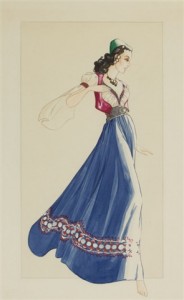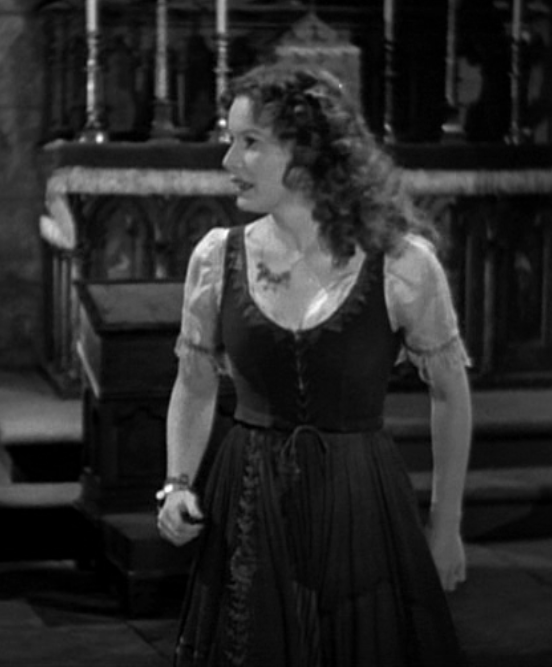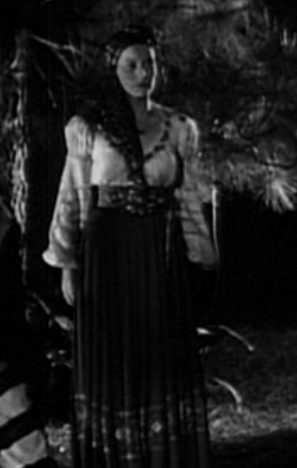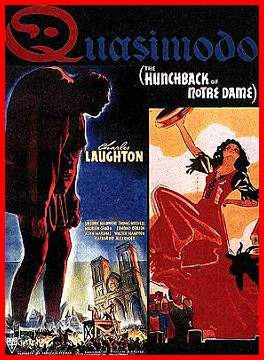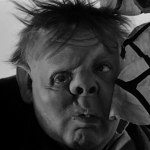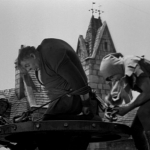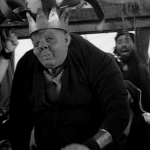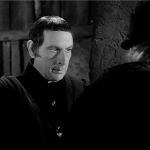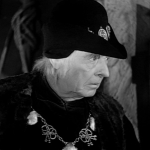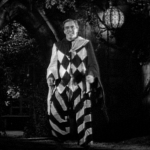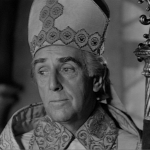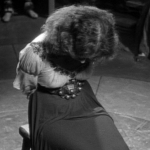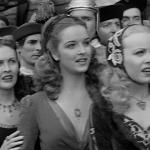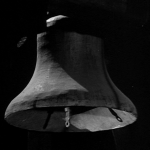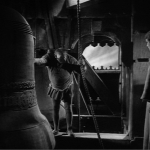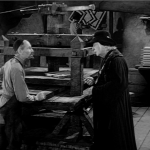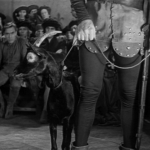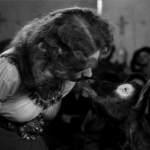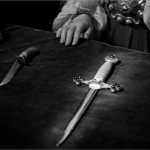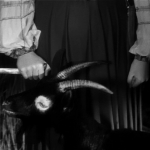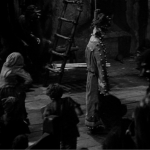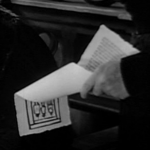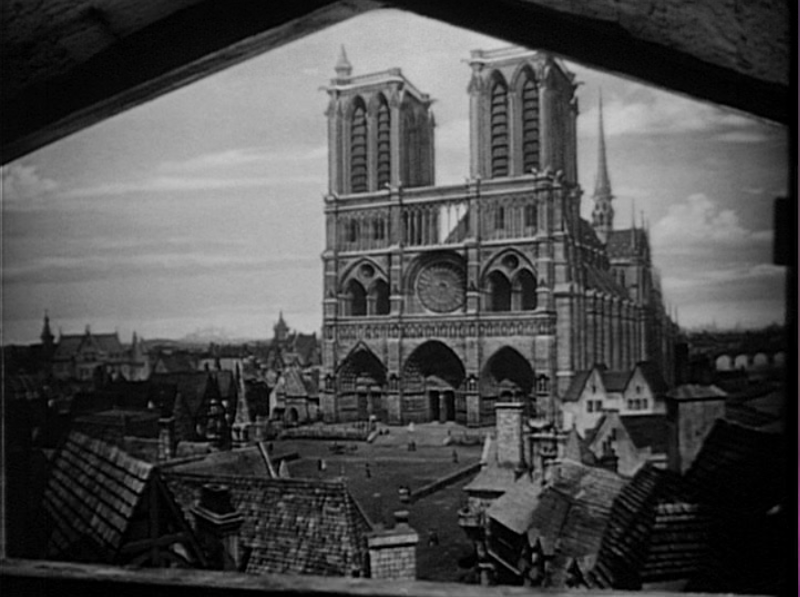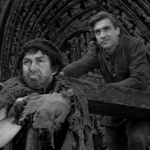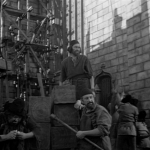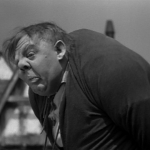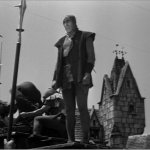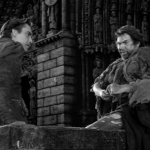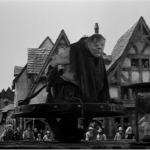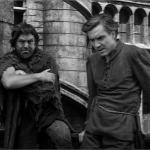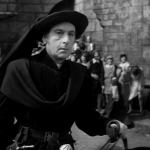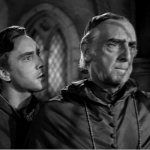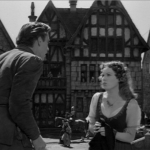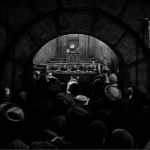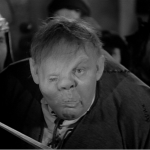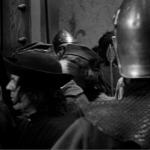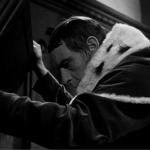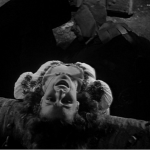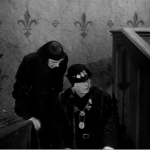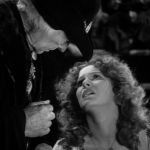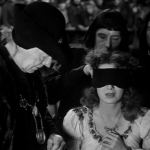page contains affiliate links
Let me first say that I love costumes, I’m a sucker for period films with pretty costumes. With that being said, with one major exception, the costumes in the 1939 version of “The Hunchback of Notre Dame” are middle of the road. They help define the setting of the story and characters. But most of the costumes are not recognizable within film nostalgia (save for one).
The costumes were designed by Walter Plunkett. Walter Plunkett was the costume designer for “Gone with the Wind“. Perhaps designing grandiose Southern Belle/Victorian bustles is a tad more fun than designing costumes for medieval Parisian and nomads. To the film’s credit it did have a ton of extras to cloth and they all look their parts.
Esmeralda– Esmeralda gets about three costumes though one is a plain white linen chemise she wears before she’s almost hanged.
Her costumes are stylized and by no means accurate, like most costumes in movies, it’s time’s interpretation of whatever period the film is depicting. Esmeralda’s main dress is a long skirt with some patch work detail, a blouse (I suppose it’s moonlighting as a chemise) it looks like it has a slight sheen and also has fringe detail and a corset with some spangle detail.
As for accessories she has a necklace and bracelet and of course being a gypsy dancer a tambourine. Her second outfit is a blouse with an embroidery detail at the neck and on the sleeves. She sports a long skirt with more embroidery. She also has a belt with a rather large buckle and a head scarf. Both of these design are derived from Plunkett’s design. As for the color of these costumes my guess would be her main one is red (though one movie has it’s a as purple and another movie poster has it as red) and I would guess her performance outfit is a blue skirt and a white blouse (though who can tell through shades of grey but the two costume are different shades of grey. Her costumes do read “nomad” but they’re not overly gimmicky. Though it is hard to speculate what the group would have been wearing in the late 15th France. Paintings from the 16th century depicted Romani wearing a sari-like garment.
Quasimodo – As I mention there was a major exception to the run-of-the-mill-i-ness of the costumes and while technically this applies to make-up it still counts.
The make-up for Laughton’s Quasimodo was masterful. A collaboration between Laughton and Make-up artist Perc Westmore and costed $10,000. Laughton & Westmore went through numerous versions and they were rejected by Laughton. He wanted his face loop-sided, so a mask had to pull the right side of face up and the left side down. A false eye was placed on his cheek and Laughton wore a colored contact in his right eye to make it look cloudy. The hump weighted 4 pounds and made of aluminum scaffold filled with a foam rubber and covered with a thin layer of elastic. Laughton wanted it to be heavy so that he could feel physical pain of walking. He also had an inch added to the sole of his left show so one leg would be shorter that other creating a natural limb. (this information is from Maureen O’Hara’s book “‘Tis Herself“). For Quasimodo the only requirement is the physical look and Notre Dame, Quasimodo can be in Tux and you would know who it is. One more thing on Quasimodo’s get-up, the King of Fool crown is a nice blend of a crown and jester’s hat.
Frollo – The villain, he wears all black and has a severe look, straight almost square cut to the hair (he’s a squareム). It looks to me that he wears velvet which is the blackest fabric and there is very little details to break up the costume so it looks like stab of black. He has a hat that has a built in cowl and has a fur trim a round his neck. All black, all severe, all rich fabric, his character is very clear he’s rich, powerful and EVIL (or just an antagonist).
Louis– I’m going to mention Louis because he’s a counterpoint for Frollo because Louis also wears all black but he has many details to break it so the black reads as a power color and not evil. He looks like a medieval kings, some regalia but more casual. He also sports a hat with jewelry, more jewelry, and a fur vest. Black but approachable yet kingly.
The Rest – Gringoire and Clopin wear pretty standard tunics nothing too special except Clopin has a big old feather in his hat. Gringoire also get a harlequin outfit for his performance at the party and it’s pretty standard. Phoebus a suit of armor and it looks very silly. Phoebus also has some party garb it a cape and tunic basically none special not like his armor. Claude the Archdeacon’s costumes looks more current(even by modern standards) than what a priest of 1400’s would have wore.
Finally being a film from the late 30’s there are costumes and accessories peppered throughout the movie that look more 30’s than medieval. Claude’s vestment (seen above), Esmeralda’s belt buckle (belts were more for swords not fashion), the extra’s hairstyle (note the length and curls) and Fleur, a glorified extra that gets a name, her dress screams late 30 design so much so that it stands out in my mind despite the fact that you only see it for a moment. The dress is made from what I can guess is a chiffon. Chiffon is not even remotely a fabric that would have been used in the 1400s. Chiffion was invented in the 18th. (Fun fact – Chiffon is french for “rag”).
More on another aspect of Mise-en-secene next time – Acting

